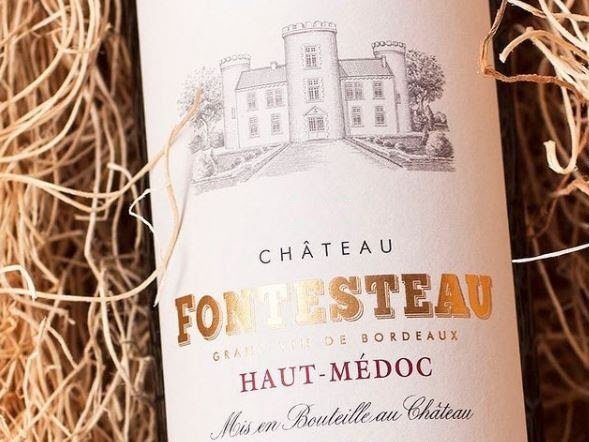HISTORY & BACKGROUND

VINEYARD. BIODIVERSITY. PASSION.
Château Fontesteau creates wines that are deeply connected to the environnement where they are made.
Fontesteau : Faithful to Nature.
North of Bordeaux, the Médoc and its vineyards stretch between the Atlantic beaches and the Gironde estuary. Nestled in the centre of this famous wine region, Fontesteau lies at the heart of a remarkable natural environment where sustainability is the key. The preservation of biodiversity is a daily commitment and the 20-hectare vineyard is in its 3rd year of conversion towards organic farming.
The XIIIth century Château Fontesteau and its lake are nestled at the heart of the estate, surrounded by a century-old oaks forest, pines and locust trees. It is home to a diversified ecosystem for fauna and flora.
-
Starting in the last decade, Château Fontesteau has implemented virtuous practices inspired by sustainable development and organic farming, to transform the estate into a more respectful farm, more responsible within its ecosystem, while involving its employees.
The estate took a strong commitment by joining the Bordeaux Wine Environmental Management System (SME) in 2017.
-
The estate and the vineyard are managed according to the principles of organic farming.
We believe this is the best for our soil, for the microorganisms and for future generations.
Our vineyard is a living organism and we must do everything we can to improve and enrich our soils to promote a diverse, living and natural ecosystem.
-
Agroecology covers a set of environmentally friendly agricultural production methods.
In compliance with the principles of sustainable development and organic farming methods, we cultivate the land while thinking to the next generations.
-
We are a member of the French Association Vignerons Indépendants. The independent winemaker cultivates his vineyard, vinifies and markets his wine directly from the property.
The independent winemaker is passionate and assumes the quality of his work.
He cultivates the vine with care, respecting the environment and in order to satisfy his customers.
The Independent Winemaker:
• respects its terroir,
• harvests its grapes,
• takes care of its wine making process,
• bottles its production in its cellar,
• markets its products,
• improves his process in the respect of tradition,
• welcomes at the winery and takes pleasure in presenting the fruit of his work and his culture.
-
The synergies between nature, our land and the work of our passionate team allow us to grow the vine while respecting ecosystems.
All our work focuses on the goal of obtaining grapes at the best of their aromatic expression.
We create wines for epicureans who like to cook, organize dinners and share the pleasures of good times with friends or family.
A Medoc wine estate with a fascinating history.
Fontesteau was already a lively place during the Gallo-Roman era and a place to stop on the way to Santiago de Compostella.
1277 : Building of the Château
… Wine making in the Haut-Médoc and the Cru Bourgeois du Médoc in 1874
1984 : Dominique FOUIN starts his winemaker life
1997 : The Immelnkemper family buys the Château Fontesteau
Many historical archives have disappeared after the battle of Castillon in 1453, but a key date was highlighted : 1277 and the construction of the Château of Fontesteau. From this period the building kepts some info : a coat of arms decorated with shells pointing that Fontesteau was on the way to Santiago de Compostela. Inlays of Salamander were also discovered during the refurbishment work.
The start of winegrowing at Fontesteau is not precisely dated. The different known owners are: Abbé MENOU, Messieurs MATTHIEU, LOMBARDI, DUQUENNE and LEGLISE.
The wines of Château Fontesteau have been classified as Cru Bourgeois in 1874 , then registered in the wine listing of 1932, and Cru Grand Bourgeois in 1966 and 1978. The recognition of the quality of the red wines of Château FONTESTEAU is long-dated and already confirms the predisposition of its terroir to give birth to great Bordeaux wines. Since 2020, Château Fontesteau has received the Cru Bourgeois Supérieur classification.
While Mr. LEGLISE sells the vines of Chateau Fontesteau, Dominique FOUIN settles on the winery in AOC Haut-Médoc, with two successive partners. He develops the estate that will reach 35 hectares, and the marketing of wines in Bordeaux, France and all over the world.
Joachim Immelnkemper had known Château Fontesteau as a child, when he accompanied his father - a German merchant - on wine shopping tours in Bordeaux and the Médoc. In 1997, he bought Château Fontesteau, undertook a complete refurbishment, and joined forces with Dominique FOUIN by investing massively in operating and winemaking structures. When he died in 2017, his daughter Sabine succeeded him and continues to promote the wines of Château Fontesteau in Germany.
2020, Château Fontesteau is highlighted as Cru Bourgeois Supérieur
The long-term commitment towards quality wines and best winemaking process was acknowledged by professionnals who ranked Château Fontesteau as Cru Bourgeois Supérieur.
Long-term praize among the Crus Bourgeois
-
The classification of Crus Bourgeois du Médoc initiated in 1740, but it was really in 1932 that the so-called Crus Bourgeois Châteaux were listed by Bordeaux brokers, under the aegis of the Bordeaux Chamber of Commerce and the Gironde Chamber of Agriculture.
The red wines produced in the eight Médoc appellations were judged according to their quality and prices : AOC Médoc, Haut-Médoc, Listrac, Moulis, Margaux, Saint-Julien, Pauillac and Saint-Estèphe.
-
Cru Bourgeois du Médoc since 1874, Château Fontesteau and its teams have always been driven by the search for quality and the satisfaction of our customers. With its outstanding architecture, Château Fontesteau is a wine tourism asset and plays an important role in the reputation of the Haut-Médoc wine region.
-
The ranking changed several times.
In 2010, the Syndicat des Crus Bourgeois du Médoc introduced a new quality approach.
The Official Selection of Crus Bourgeois du Médoc is then published every year in September.
-
For this new Classification of Crus Bourgeois du Médoc in 2020, five vintages between 2008 and 2016 were blind tasted by wine professionals.
Once this first test was passed, each wine estate had to support their application by presenting a complete file. An on site visit also took place to audit the environmental behaviors, the winemaking techniques and marketing.
Daily commitment towards Biodiversity
Everyday, we focus in protecting Nature and all the wonderful natural environnement of our wine estate in the Haut-Médoc.
Quality Bordeaux Red Wines
Cru Bourgeois du Médoc since 1932, the acclaimed quality of Château Fontesteau’s wines is the result of full commitment of a passionate team.










